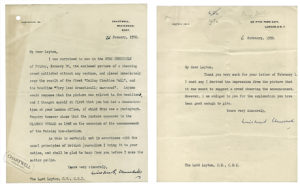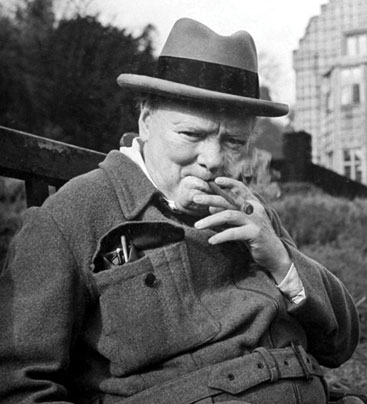WINSTON CHURCHILL AND THE POWER OF CLEAR, COLD, FACTS
As England’s soon-to-be-Ex-Prime Minister (and our one-time in-store headliner) sinks slowly into the blistering heat of a climate-changed English summer, while our former-President (and longtime down-the-block neighbor, who never ever visited), simmers in the soup of his own cooked-up election lies, we turn for a cool draught to Winston Churchill and a reminder of his reverence for the unassailable science of cold, clear facts, especially at election time.
 No one read more newspapers more closely on a daily basis than Winston Churchill did. When Prime Minister Clement Atlee suddenly announced in January 1950 that a General Election would be held on February 23, Churchill — out of power and on extended holiday in Madeira, Spain — abruptly returned to London. He took an active part in preparing the Conservative Party’s election manifesto. And he read the papers, clearly attuned to any perceived threats to his party’s chances.
No one read more newspapers more closely on a daily basis than Winston Churchill did. When Prime Minister Clement Atlee suddenly announced in January 1950 that a General Election would be held on February 23, Churchill — out of power and on extended holiday in Madeira, Spain — abruptly returned to London. He took an active part in preparing the Conservative Party’s election manifesto. And he read the papers, clearly attuned to any perceived threats to his party’s chances.
On January 26, in a letter that we are privileged to have here for sale in the store, Churchill wrote indignantly to the Chairman of The News Chronicle, Walter Layton — who had been Churchill’s statistical officer at the Ministry of Munitions during World War I and, from 1942-1943, had run his Joint War Production staff :
“My dear Layton, I was surprised to see in the NEWS CHRONICLE … the enclosed picture of a cheering crowd published without any caption, and placed immediately over the result of the first ‘Gallup Election Poll,’ and the headline ‘Tory lead dramatically narrowed.’ Anyone would suppose that the picture was related to the headline … Enquiry however shows that the picture appeared in the GLASGOW HERALD in 1948 on the occasion of the announcement of the Paisley bye-election.
“As this is certainly not in accordance with the usual principles of British journalism,” Churchill concluded, “I bring it to your notice, and shall be glad to hear from you before I make the matter public.”
Preserved with the letter is Churchill’s original newscutting of the article, a carbon of Mr. Layton’s letter in reply (“I’m afraid you are reading far more into the picture…than was ever intended.”), and Churchill’s response, on 28 Hyde Park Gate letterhead, dated 6 February, 1950:
 My dear Layton,
My dear Layton,
Thank you very much for your letter of February 1. I must say I derived the impression from the picture that it was meant to suggest a crowd cheering the announcement. However, I am obliged to you for the explanation you have been good enough to give.”
Yours very sincerely,
Winston S. Churchill
We wish you close reading in good health and safety, and a summer well-ventilated by facts.


